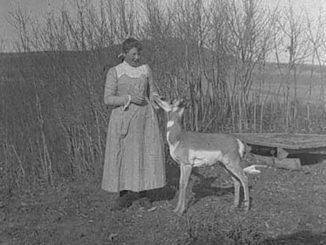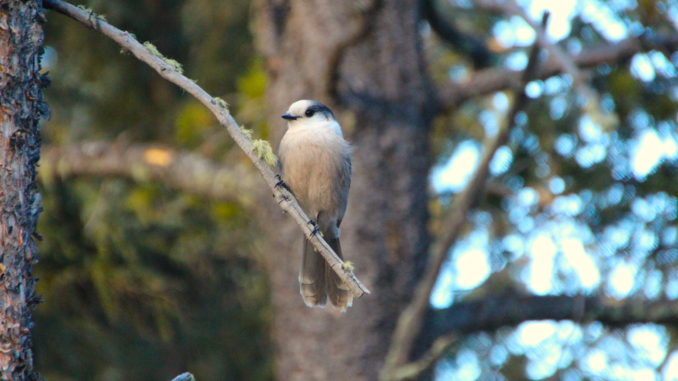
“If I had to come up with a bunch of words to describe Canadians, I would pick friendly, hardy, adaptable, intelligent, trusting, and opportunistic. If I had to pick a bird that fit those characteristics, it would be the Gray Jay.”
-David Bird
Canada has many symbols that define us as a country. Likely the two most popular are the flag, which features both of our national colours (red and white) and O Canada, our national anthem. We also have our Coat of Arms with the Latin phrase, A Mari Usque Ad Mare, which is officially translated as From Sea to Sea. In addition there is also our national animal (Beaver), national tree (Maple Tree), national tartan (Maple Leaf Tartan), national horse (Canadian Horse), and two national sports (lacrosse in the summer and hockey in the winter), plus a host of other symbols unofficially recognized, but still equally Canadian. So it might come as a surprise that Canada does not have a national bird, until now.
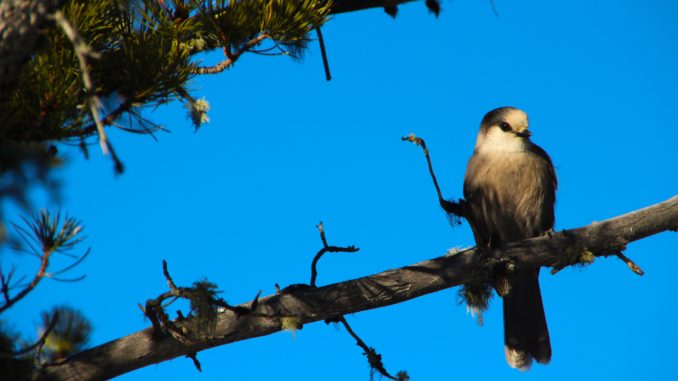
In preparation for the 150th anniversary of Confederation (happening this year in 2017) the fine folks at Canadian Geographic took it upon themselves to start the conversation about this missing symbol from Canada’s identity. They founded the National Bird Project in 2015 with the aim of declaring an official bird by the beginning of 2017. With more than 450 different bird species across our country this seemed like a monumental task. The project unfolded in three distinct phases, with the first featuring a round of voting open to all Canadians. Each citizen had an opportunity to nominate their favourite bird for this prestigious honour and contribute convincing arguments about why theirs should be chosen. Almost 50,000 people submitted their choices and eventually the field was narrowed down to the top five as decided by the popular vote. The five finalists included the Canada Goose, Black-Capped Chickadee, Snowy Owl, Gray Jay, and Common Loon; any of which would be a fine representative of this great country.

Phase two saw the Royal Canadian Geographic Society convene a panel of experts to debate which of the top five species was the most worthy in receiving the honour of being labelled Canada’s official bird. This Can Geo Talks event was hosted by George Kourounis and featured opening remarks by Catherine McKenna, Minister of Environment and Climate Change. Each of the winged candidates was defended by a prominent expert in the field. The Black-Capped Chickadee had George Elliott Clarke, Canada’s Poet Laureate, in its corner, while the Gray Jay had David Bird, Professor Emeritus of Wildlife Biology at McGill University. The Canada Goose was defended by Mark S. Graham, Vice-President of Research and Collections for the Canadian Museum of Nature, the Snowy Owl had Alex MacDonald, Senior Conservation Manager with Nature Canada, and rounding out the five was Steven Price, President of Bird Studies Canada who was representing the Common Loon.

After the debate the Royal Canadian Geographic Society (RCGS) weighed all the options and finally made their recommendation for Canada’s National Bird during its College of Fellows Annual Dinner in November 2016. Opting to go against the popular vote of Canadians, the RCGS decided the Gray Jay would be Canada’s newest official symbol. As you’d imagine the announcement caused a fair bit of controversy among Canadians, many of whom wanted to see a more familiar face, or should I say beak, in the top spot. Others still were upset that the top vote-getter (the Common Loon) wasn’t awarded the distinction. The Gray Jay was actually sitting in third place, behind the aforementioned Loon and the Snowy Owl, after the votes were tallied and yet the bronze medalist somehow came out on top. I was part of the critics at first (I originally voted for the Loon), but the more I thought about it the more I liked their choice.

The Gray Jay, also known as the Whiskey Jack or the Canada Jay, can be found in every province and territory and is a year-round resident, opting to tough it out during our harsh Canadian winters as opposed to migrating to warmer climes. It also wasn’t previously spoken for as a provincial emblem like many of the other front-runners, such as the Black-Capped Chickadee (New Brunswick), the Snowy Owl (Québec), and the Common Loon (Ontario), which is also already featured on our one-dollar coin, the Loonie. Its preferred habitat is the boreal forest; vast tracts of land that stretch from coast to coast and cover almost two-thirds of Canada’s landmass. The Gray Jay belongs to the corvid family (like Crows, Ravens, and Blue Jays), which means they’re among the smartest birds in the world. Their body-to-brain ratio is nearly the same as humans, which comes in handy when trying to remember the locations of their hidden food caches they’ve stockpiled for the winter. Their innate sense of curiosity can lead to some bold behaviour. They’ll magically appear from the depths of the forest to investigate an uncommon sound or to search for potential food sources. I’ve witnessed many an unsuspecting soul lose a french fry to the craftiness of these critters. Both its Latin name (Perisoreus canadensis) and its French translation (Mésangeai du Canada) reflect just how Canadian this bird really is!
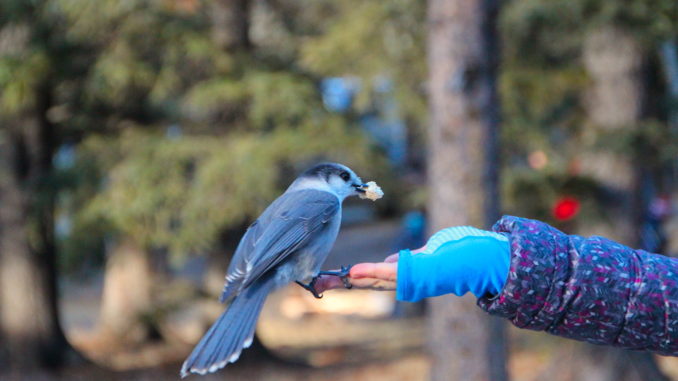
Gray Jays are also prominently featured in many traditional First Nation stories and legends. The name Whiskey Jack is actually an Anglicized version of the Cree word Wisakedjak, which was commonly used by many Algonquian people. In these stories they’re primarily tricksters with playful, generous spirits and are often teachers or messengers of the forest. Many western First Nations consider the appearance of a Gray Jay in the morning to be a good omen and their whistling calls to be an early warning of nearby predators. There are even tales from the Yukon of Gray Jays leading lost and starving hunters safely back home.
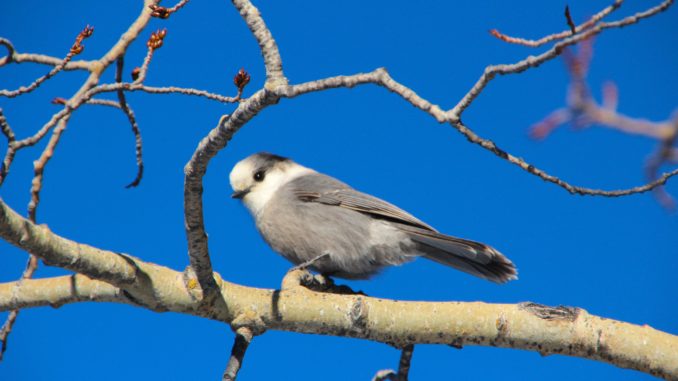
For me nothing is more representative of the Canadian wilds than the haunting call of the Loon echoing over a forest-rimmed lake on a warm summer evening. That was the primary reason I cast my ballot with an ‘x’ next to Gavia immer. I was upset when the announcement was made and thought the RCGS got it wrong, but the more I discovered about the Gray Jay the more I realized it was the perfect choice. There isn’t a better representative from the avian species than the Gray Jay; it’s synonymous with Canada and Canadians alike.



